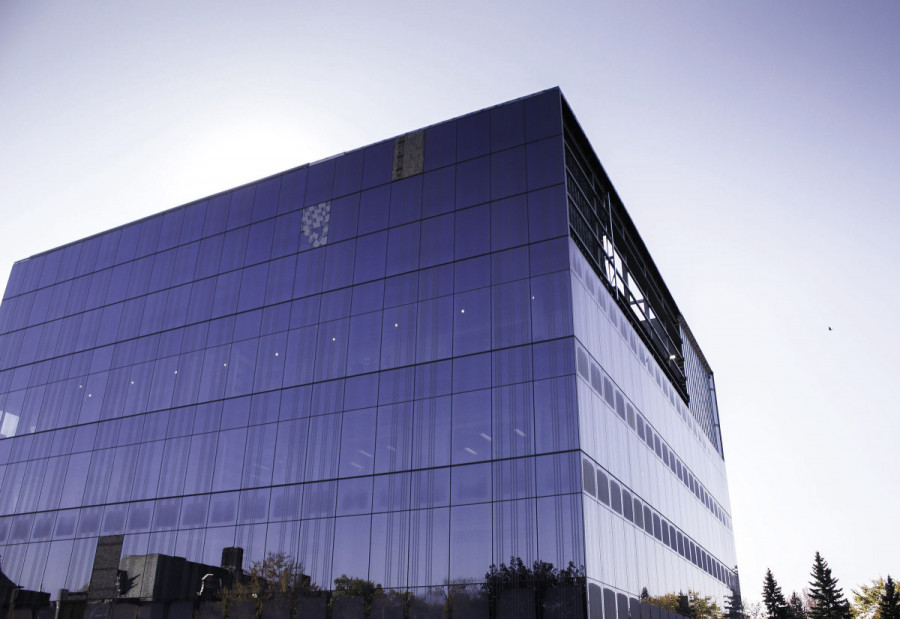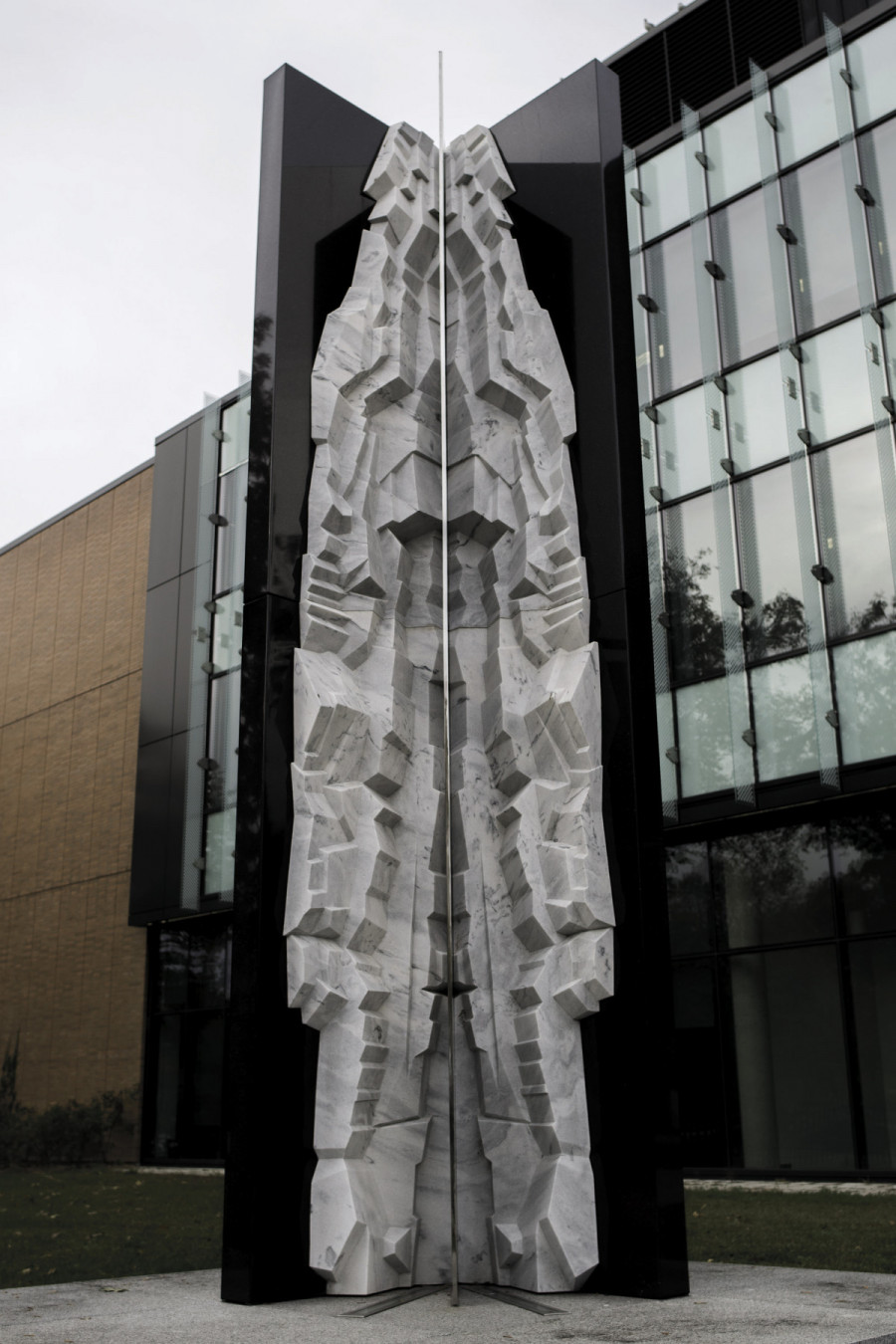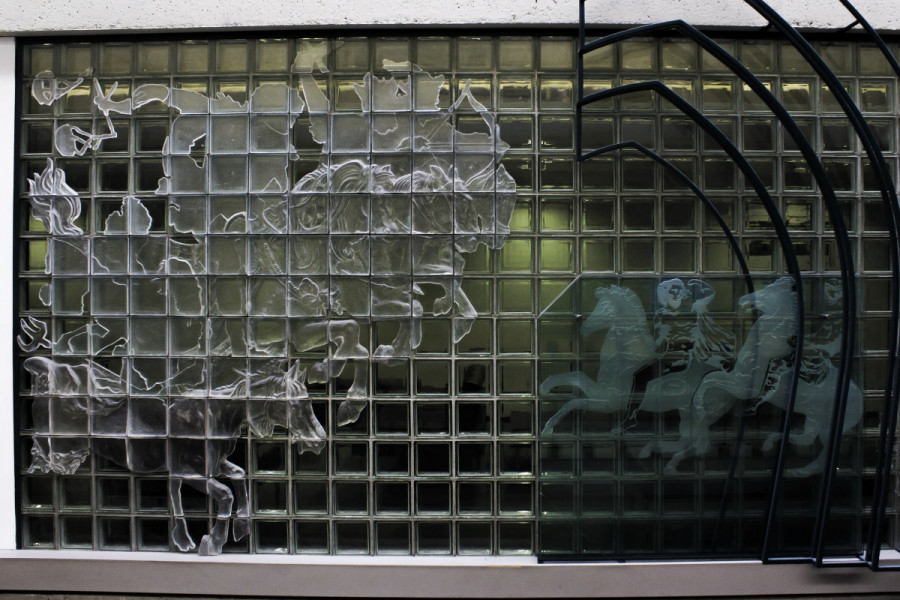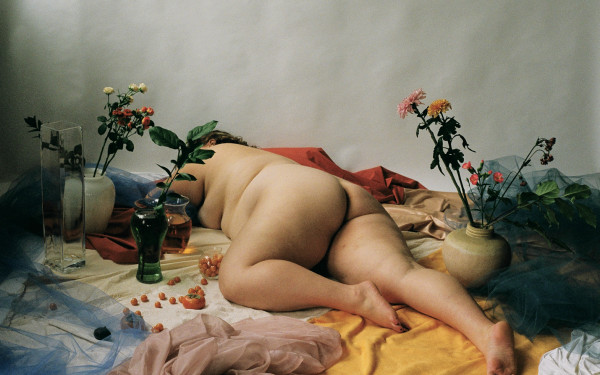Concordia’s Role in Quebec’s Public Art Program
How does Quebec’s Percent for Art Program Apply Within Concordia University?
When you’re walking around downtown or in Old Montreal, you’ll probably cross a few artworks on your way. They might be hiding, subtly hanging, or showing their true colours only under daylight. But they’re there, adding a story and a touch of personality to cold, empty walls.
It all began in 1961, when the Quebec Ministry of Culture and Communications decided to implement a policy to have more public art in the city. The Program to Integrate Art Into Architecture and the Environment, also known as the per cent for art program, allocates approximately one per cent of the construction or expansion budget to fund public art for any institution subsidized by the government.
“It actually helps promote Quebec artists, because we are choosing people who are making art in this province, and it gives them a new form other than gallery work to reach a wider public,” said Sandra Margolian, associate coordinator at the Office of Community Engagement at Concordia.
“It introduces students and the general public to artwork without having to enter an art gallery,” she said.
Artwork adorns the arteries of this city. The policy also applies to many buildings or public areas including theaters, hospitals, conservatories, museums, courthouses, sports centres, and schools, like Concordia.
Concordia’s curation of on-campus public artwork includes a myriad of creations—varying in dimension, medium, colour, and form—eight of which were produced under the framework of Quebec’s one per cent program.
But not all public art pieces are created within the framework of that program. Some are donated or are commissioned works.
Twenty-five years after the implementation of the original policy, Concordia installed its first artwork in collaboration with the Ministry of Culture and Communications in the one per cent program’s framework. François Houdé’s Four Horsemen, as part of his Ming Series, was inaugurated at the Loyola campus in the late 1980s. The glass sculpture blends seamlessly into the Vanier Library’s stairwell.
The most recent addition will be the artwork for the new Applied Science Hub at Loyola. Though the construction has not yet been finalized and the artwork has not been announced officially, the occupancy date is currently projected for spring 2020, following the end of construction. The installation, hand-crafted by Marc-Antoine Côté, will be made of metal.

“He wants to use light and wants to take advantage of the fact that people will be able to take in his work from multiple angles as they are circulating around the hub,” said Fiona Downey, senior advisor of public affairs and deputy spokesperson at Concordia.
Before diving into the imagination and artistry, the artist is made aware of the intended use of the building in order to produce a piece that fits within the physical space, regarding both aesthetics and logistical elements.
Dominique Dumont, facilities development manager, explained that there is a lot of planning that goes into it. She was involved in the early stages of the process. “The architect has the role to say if [the project] is feasible or not,” she said.
How is the budget for the artwork calculated?
The budget depends on the total cost of the construction project. When a project costs between $150,000 and $400,000, the artwork is acquired. When it costs more than $400,000, it is integrated into the construction. For any project costing between $150,000 and $400,000, the minimum amount put towards artwork would be $2,626. For any project costing $5 million or more, the minimum amount reserved in the budget for artwork would be $67,500.
In the case of the Applied Science Hub, the structure will mostly house research labs, providing state-of-the-art equipment and facilities to support scientific research where faculty and graduate students can work.
The proper integration of the artwork is crucial to a successful outcome. An external and internal team collaborate to make sure it all goes as anticipated.
“[The artwork] has to make sense for the entry of the building,” said Kirsten Sutherland, facilities manager at Concordia. “[It is important to] coordinate the location so that is doesn’t impede on the circulation and the plan of landscaping.”
Concordia’s facilities management team—whose members are involved with the management of the project as they guide and advise—works closely with the externally hired architects who are in charge of the entire construction.
As part of the policy’s framework, the Ministry of Culture and Communications created a database of Quebec artists. Depending on the budget of the construction project, the committee will determine the pool of province-wide artists they can pick from. The larger the budget, the wider the spread.
“For instance, the [Applied Science Hub had] a very large budget, it was a huge building so we had access to all of the artists in Quebec,” said Margolian, who sat on the committee that elected the artist.
After committee meetings and proposal submissions, one artist will ultimately be selected who will work closely with the architects to ensure the proper integration of the artwork within the public area.
“Clearly there are not these competitions every week. There are very few of them that happen […] so it’s not like curating in an art gallery where you’re actively acquiring or exhibiting new things. It’s very sporadic,” said Margolian.

Emilie Mercier, communications consultant at the Ministry of Culture and Communications, called the policy unique and a key piece in the “democratization of art.”
“Indeed, the support given to the creation of public artworks results in an enrichment of the living environment through the presence of these works in all public places, including universities.”
“More than 4,000 works have been installed throughout Quebec, and $168 million have been invested,” she said.
However, in projects executed under a governmental framework, the artist’s creativity can sometimes be compromised, according to Concordia fine arts alumna Cindy Hill.
“In some cases, with corporations and institutions, there’s a certain set of constraints that surround it that can make work really frustrating and limiting,” said Hill. That being said, when artists produce public artwork working in galleries, their opinion and input is prioritized because they are the only party concerned with the production. The control falls in the hands of one person: the artist.
“When you think about public art in [the context of galleries], there’s a lot more freedom so people can do things that are more in line with what they’re actually thinking about, more experimental and work without boundaries,” she said.
“But overall I think it’s a good thing,” she added. “It forces buildings and corporations to invest in art.”


_600_832_s.png)



_600_375_90_s_c1.jpg)
